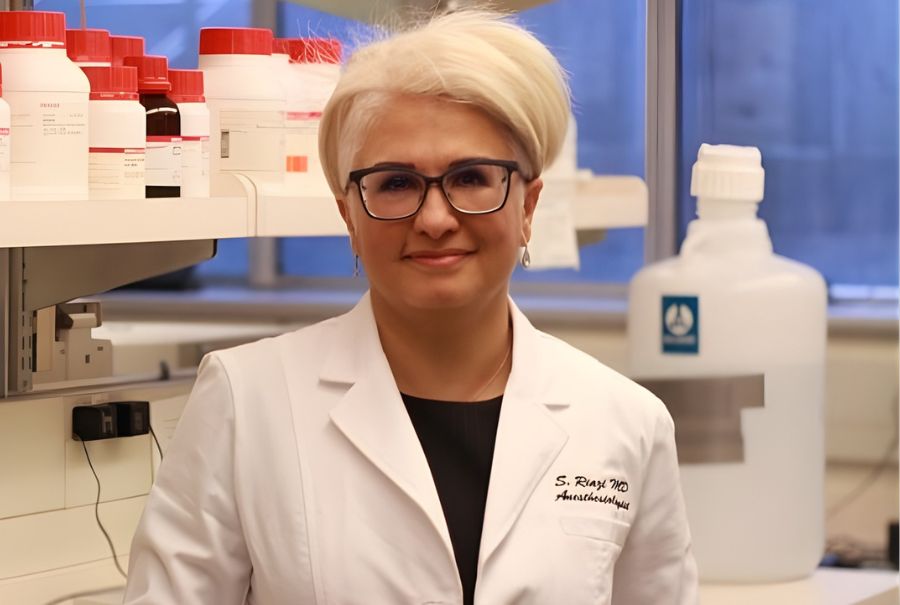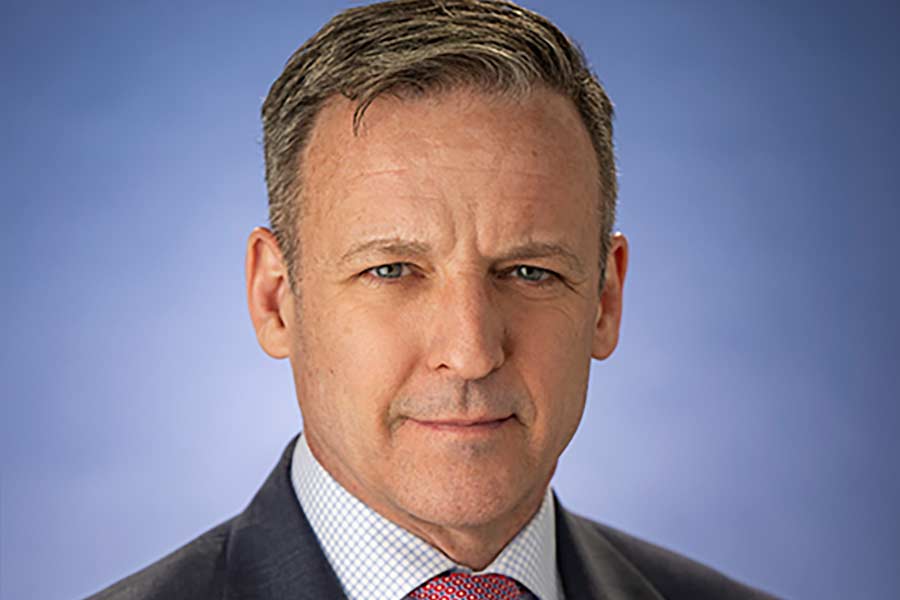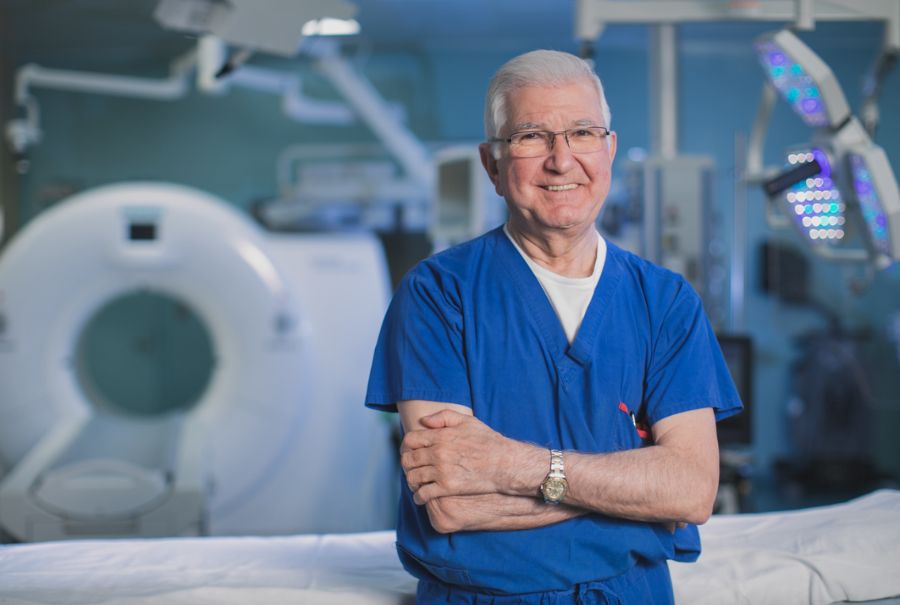Luwam Ogbaselassie, Implementation Lead with UHN’s Social Medicine Program and Black Creek Regional Lead, is a link connecting various partners in the community vaccination efforts. She says she cherishes the “true team spirit” and “real camaraderie” on display at the clinic at C.W. Jefferys Collegiate Institute. (Photo: UHN)
It’s more than 90 minutes before the first vaccine dose will go into an arm but already the line of masked and socially-distanced people stretches from the front doors of C. W. Jefferys Collegiate Institute, down the sidewalk, around the side of the building and along the edge of the parking lot.
Inside, the foyer, “cafeterium” and nearby rooms, long silenced by the closing of Toronto schools due to COVID-19, are bustling. Finishing touches are being applied to the arrangement of 18 picnic-style tables that will serve as vaccination stations, which will be staffed by physicians from UHN’s Family Health Team. Sturdy, high-backed benches sit off to one side in anticipation of recipients waiting 15 minutes post shot. Down the hall, in what is normally the Music Room, a team of pharmacy technicians from UHN and the University of Toronto draw doses of Pfizer and Moderna.
The Black Creek Community Health Centre (BCCHC) has been leading large pop-up vaccination clinics for the past 10 weeks, and this is the first clinic for second doses. It’s part of the Team Toronto Sprint Strategy 2.0, which has community groups teaming up with hospital partners to administer vaccines in 18 hot spot postal codes across the city.
“We bring the vaccines. We bring the support,” says Luwam Ogbaselassie, Implementation Lead with UHN’s Social Medicine Program and Black Creek Regional Lead. “But we’re taking our direction from Black Creek CHC because they know their community the best.
“There’s a real camaraderie. A true team spirit. There’s a feeling that we’re all in this together.”
Racialized communities such as this one in Toronto’s northwest have been disproportionately ravaged by COVID-19. And that disadvantage and disregard, along with existing structural and systemic barriers, were evident in the initial vaccine rollout as seen in fewer pharmacies in the area, an online booking system that is near-impossible for those with language or technology challenges, limited clinic operating hours, and a distrust in the system. All of that led to an early lag in vaccination rates.
Some said having fewer people in this and other racialized communities vaccinated was an indication of hesitancy. But those who know best – residents and people who work here – know it’s about access.
“We heard stories about people not wanting to get their vaccine,” Michelle Westin, Senior Analyst at Black Creek CHC and Community Lead with Sprint, says to about 40 clinic staff and volunteers at the huddle 15 minutes before doors open at noon. “But when we brought vaccine to the community, we saw we had thousands of people in line.
“This is the next stage of making our community healthier. Let’s get our vaccine rates up higher than the rest of the city and show people that this community can make a difference.”
Community. It’s more than a word at this clinic, it defines the day and the experience for all who attend.
Dana McIntosh is among the first people any recipient sees upon arrival. A longtime resident of nearby Shoreham Court, Dana is one of many Community Ambassadors with Black Creek CHC. They answer questions, confirm eligibility for a shot via postal code and gap between doses, and hand out colour-coded cards – blue for Pfizer, green for Moderna – for those who can get vaccinated today.
A thoughtful woman with a gift for making strangers feel welcome, Dana has worked numerous other vaccine pop-ups in the area and says she’s “very proud” of the turnouts, and because it’s community run.
As she’s quick to tell anyone who has any questions, Dana was initially vaccine hesitant. She felt it was produced too quickly. Her plan was to wait a while, make sure it was 100 per cent safe.
“Then, one of my neighbours died of COVID,” she says. “He was like a father figure to me. That made me get vaccinated.
“Now, when people see me, they know I took the first dose. I took the second. They see someone standing in front of them, who was hesitant and is from this community, and they feel comfortable.”
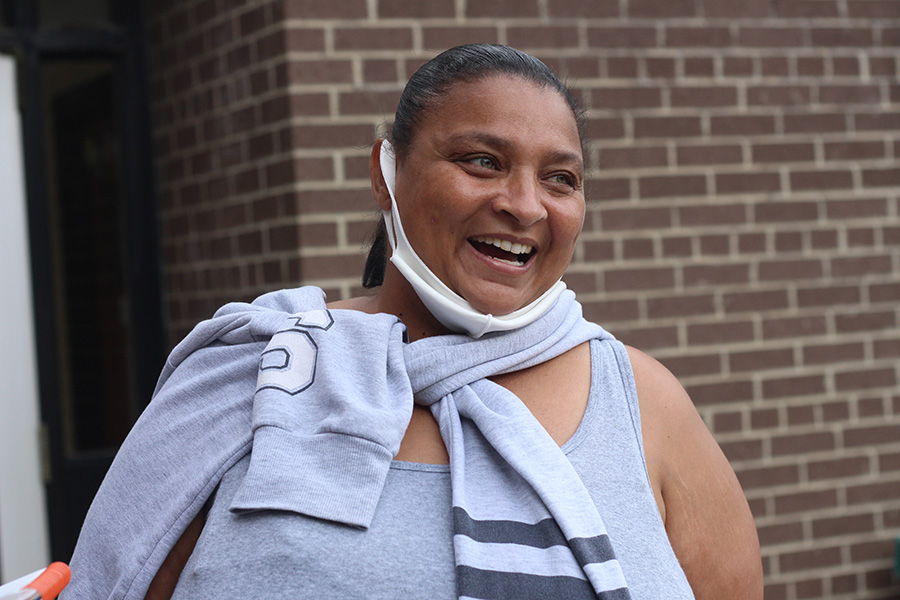
As the doors are set to open, the line is about 150 people deep. It’s been repositioned out of the parking lot and now stretches from the school’s front doors, down the sidewalk toward Finch Ave. W.
Among those standing in line there’s an anticipation, bordering on excitement. There are individuals looking at their mobile phones or chatting – at a distance – with their masked counterparts. More common is couples or groups, multiple generations of the same family, waiting to roll up a sleeve.
Inside, Site Leads for the Mobile Vaccine Team at UHN – Brian Low, Andrew Abercrombie and Bailey Mcnulty – organize huddles and offer final instructions for the day. They are as enthusiastic as they are informative. They stress that organization and communication is key, note more than 1300 doses will be available on the day and remind everyone social demographic information – race, ethnicity, income, size of household, mother tongue and preferred language at home – will be collected from recipients as they wait their 15 minutes post-inoculation.
“It’s going to be a good day. It’s going to be a busy day,” Brian says to applause.
One volunteer asks about translators. “Great question,” Brian says. “Do we have any translators today?” Around the room, languages are shouted: Hindi, Tamil, Spanish, Farsi, Arabic, Vietnamese, Greek.
Since early May, this team has been working with the Black Creek CHC on the community vaccine rollout. They have had larger clinics such as this one in schools, community centres, mosques and churches, but they’ve also localized the work, going door-to-door in some apartment buildings.
“Everyone is working together to create a firewall of people with second doses around this community,” he says. “It’s very important that it be as barrier-free and convenient as possible.”
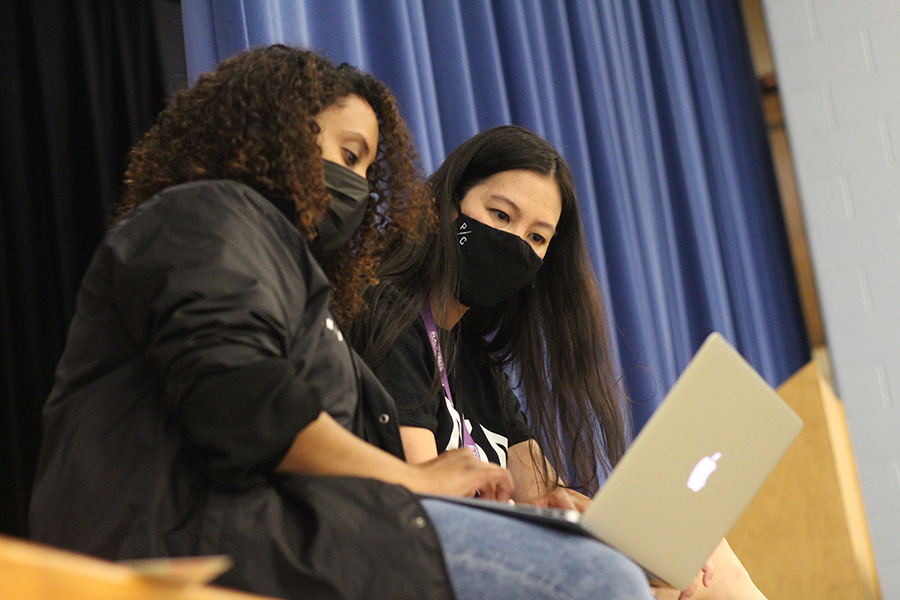
At about 1 p.m., comes a clear example of the access everyone here is striving to achieve. A young woman tells clinic staff that her mother is out in the car but cannot walk in for her second dose. Within 10 minutes, Dr. Tahira Redwood and another clinician are out in the parking lot, syringe in hand.
Dr. Redwood asks the screening questions of the mother and then administers a second dose. The daughter is also eligible for a second dose, which they don’t have in hand. While the women chat, someone else is sent to fetch another vaccine, which is promptly administered. After the two women wait 15 minutes in their car, they drive away with a wave.
“It shows how important accessibility to health care is,” says Dr. Redwood, a volunteer with Black Creek CHC and today’s Clinical Co-Lead. “We found a lot of people who haven’t been able to get vaccinated because of transport issues, or having illnesses that don’t allow them to stand in line for long periods.
“Removing those barriers has been really good and shows it’s not about hesitancy but accessibility.”
Dr. Redwood, an Interventional Cardiology Fellow at UHN’s Peter Munk Cardiac Centre, says her first exposure to a vaccine pop-up clinic was one in May organized by Black Creek CHC and UHN Social Medicine with the Jamaican Canadian Association. Volunteering at it was “enlightening,” she says.
“My background is Jamaican,” she says. “I could see how happy it made people who came to the clinic to see other Caribbean people helping out with vaccines, people who look like them, talk like them.”
It’s about 2 p.m., less than two hours into the day’s clinic, and the line of people outside is about 300 deep. It fills the sidewalk in front of the school and stretches down the block, around the corner and halfway down another block, even under a threatening sky. Dana and the other Community Ambassadors hand out blue cards – all the Moderna is gone for the day – and 10 people from Black Creek CHC and UHN work the line, gathering information on iPads to speed up the vaccination process.
“This is amazing,” Luwam says of the turnout. “And, tomorrow, we’re hoping to get even more vaccine.”
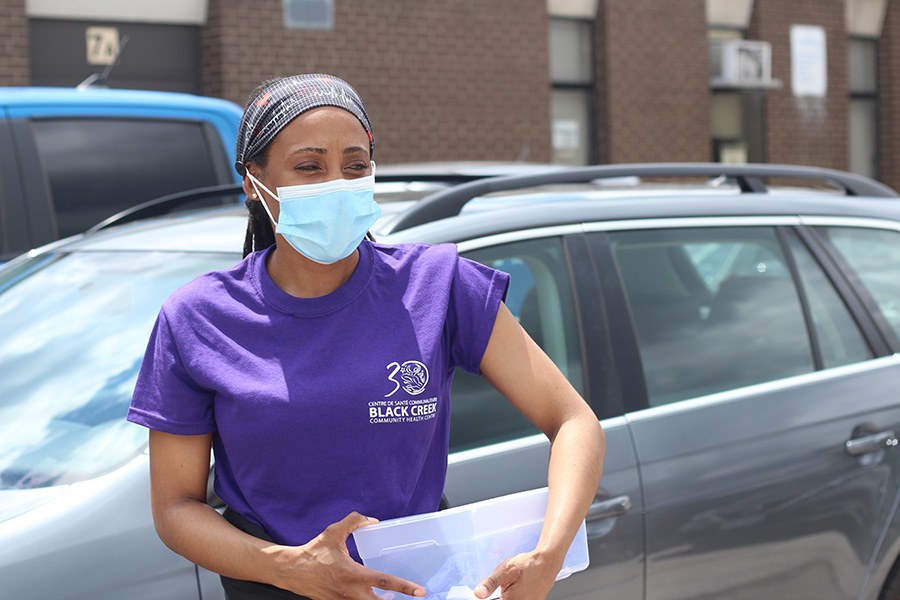
Like many here, Luwam is multi-tasking. In addition to hourly huddles with the other Leads to make sure there are no issues with today’s pop-up, lots comes up. She takes a phone call about a small vaccine clinic at a youth shelter, another arm of the vaccine rollout that she leads, this one in partnership with Parkdale Queen West CHC. The supply of after-care sheets given to people following their vaccination is running low, so she puts in a print order for more. A draft playbook on how the pop-up clinics operate requires some edits, and she takes a call from Tania Carlyle, Mobile Vaccination Ring Operations Lead, so they can work through them together.
And, throughout the day, Luwam is talking with community and UHN representatives on site, as well as the UHN Vaccine Depot led by Ajay Pillai downtown, to see what additional pop-up clinics are possible beyond the four consecutive days planned at C.W. Jefferys and some smaller weekend ones.
“We want to get as much vaccine into the community as fast as we possibly can,” Luwam says.
Back outside, a rain shower has only briefly thinned the line-up. It’s near 5 p.m. and the post-work rush is building. Community Ambassadors are on their eighth batch of 100 cards to give to those arriving.
A woman struggles down the sidewalk, pushing the wheelchair of her teenaged daughter in a cast. Dana immediately goes over says she’ll take them to the priority line at the school’s entrance, but the woman resists because her son is standing further down the block and she wants them to go in together.
“Let’s call him over,” Dana says. “He’s coming with you. We don’t separate families around here.”
“Thank you. Thank you,” the woman says as Dana readies to guide them to the front of the line.
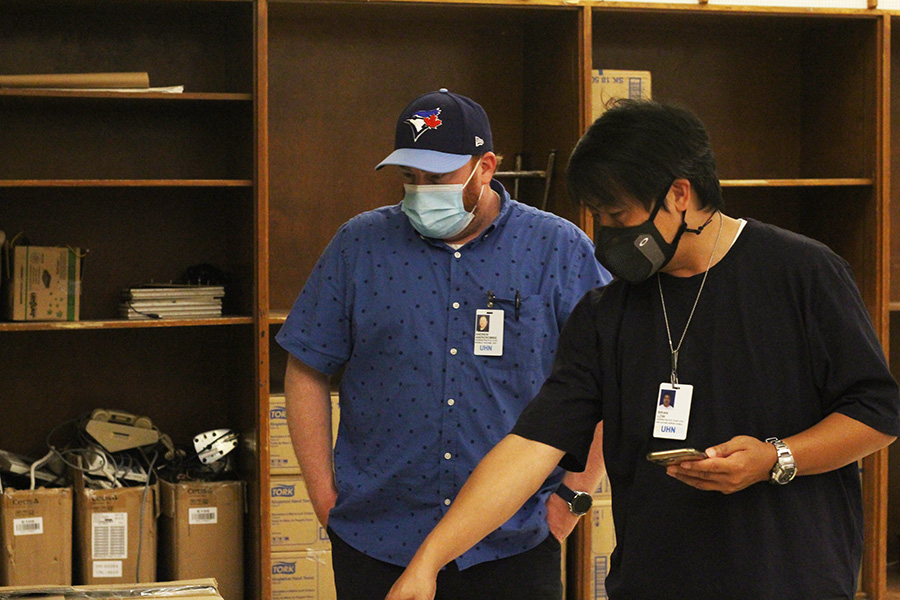
Throughout the day, it’s a family event. While there’s certainly no shortage of individuals, couples, parents and kids, and often the grandparents, too, file through. At one vaccine station, a young man dances as his father gets a shot. At another, the clinician has a girl sanitize her hands before allowing her to apply a small bandage to the shoulder of her mother, whose eyes are beaming after a second dose.
This is a workday. But at some previous pop-up clinics, particularly on weekends, there’s been a deejay playing music and appearances by “TVAX” – BCCHC’s Michelle Westin in a Tyrannosaurus rex costume.
Cheryl Prescod, Executive Director of Black Creek Community Health Centre, attributes the success of this day’s clinic and all the previous ones “to the people in the community who have embraced this.
“We’ve also been very fortunate to work with the team at UHN, people who really get the language of health equity and view things through that lens,” Cheryl says. “We feel the respect we have from them.
“When we speak, we feel that we are being heard.”
Cheryl says the experience of community health centres – Black Creek and so many others across the city and province – “stepping up” during the pandemic shows the possibilities for this model of partnership between healthcare providers and the community going forward.
“This model needs to be honed for other things, such as chronic disease management,” says Cheryl, noting that in the future, instead of COVID-19 vaccine clinics, it could be diabetes education on healthy eating or cancer screening. “It’s about keeping people healthy in their community and out of hospitals.”
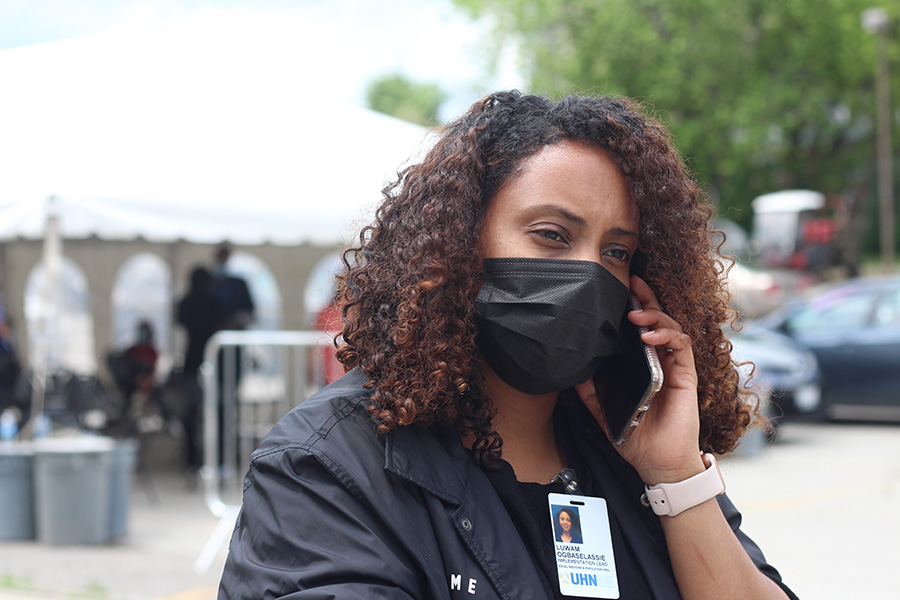
Dr. Andrew Boozary, Founding Director of the Gattuso Centre for Social Medicine at UHN, echoes Cheryl.
“The pandemic has highlighted the historical inequities within our society in general and our healthcare system in particular,” says Dr. Boozary. “But through community-led endeavours such as these we get a glimpse of the power that exists to be able to effect change and keep people healthier.
“It’s through these partnerships that we can reduce barriers for all people, which must be the goal.”
At 7:10 p.m., all of the remaining syringes have been drawn and sit on the tables. Community Ambassadors have given out a corresponding number of blue cards for those Pfizer doses. But, just in case the count is off, a few in line have been asked to stay, so every last dose available is used.
Less than 30 minutes later, at 7:37 p.m., as many of the clinic volunteers and staff are wiping down the tables, the last of 1,454 doses of vaccine on the day is administered. A small group watches. They applaud.
“The teamwork and partnership here is amazing, very cohesive, very solutions-driven,” Luwam says. “It’s been that way from the start – working together, a powerhouse committed to a task we all know is so important.”
